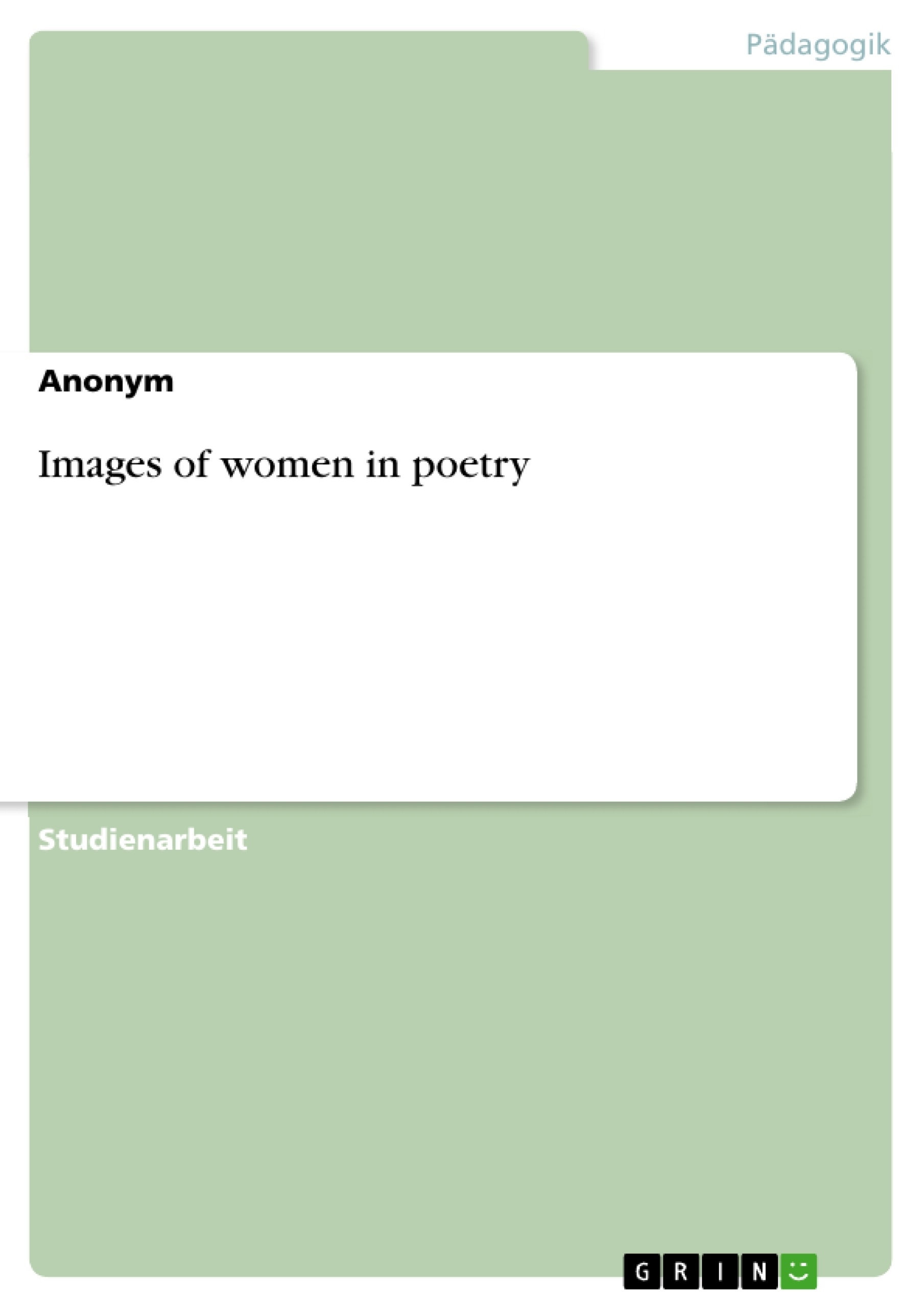Is it truly love that lets a woman look like a divine beauty? Or does the poet just
lists the features of beauty within nearly each and every one of his sonnets?
There are many different images of women in poetry and writers know how to
present their beloved best. But actually, how important was beauty in order to
love someone? Such questions have inspired me to pick this topic for the
further analysis of the typical perception of women in some selected love
sonnets.
The man, who brought attention to the Italian sonnet, was Francesco Petrarca
who was usually referred to as Petrarch. Especially his sonnets for his idealized
girl, Laura, characterized the pan-European love poetry of the Renaissance up
to the seventeenth century (c.f. 9.9.201 http://lo-net2.de/home/
mario.leis/Download_Anglistik_Frauenbild.pdf)
That is why many writers adopted Petrarch’s conception of love, beauty and
perfection. But of course there are just as many poets who have turned away
from the pure admiration of the idealized female figure.
In my following analysis I will take a closer look at the image of women in Sir
Philip Sidney’s sonnet 91 and Shakespeare’s sonnet 130 in comparison to the
traditional concept of Petrarch. It is important to establish the drastic changes
which exist in these two works. How much do the ladies of Shakespeare and
Sidney differ from Petrarch’s Laura?
Do their shared characteristics outweigh the differences? And more importantly:
Is there a turning point in the historical development of literature with reference
to the visual representation of feminine beauty?
In my work, I have tried to find answers to these central questions.
First of all, I would like to give a short overview on the Petrarchan tradition and
then analyze sonnet 90 which was written for his beloved Laura. After that I will
concentrate on Sir Philip Sidney’s presentation of women. In doing so, I will
analyze sonnet 91 from his sonnet sequence Astrophil and Stella. Then I will
continue like this for sonnet 130 by Shakespeare. Finally, I would like to sum up
my results and give a brief conclusion.
Inhaltsverzeichnis
- Introduction
- Francesco Petrarch
- Petrarch's tradition and his presentation of the woman
- Image of woman in sonnet 90 by Petrarch
- Sir Philip Sidney
- Sir Philip Sidney and his presentation of the woman
- Image of woman in sonnet 91 by Sidney
- William Shakespeare
- William Shakespeare, his lyrical tradition and presentation of the woman
- Image of women in Sonnet 130 by William Shakespeare
- Conclusion
Zielsetzung und Themenschwerpunkte
Diese Arbeit analysiert die Darstellung von Frauen in ausgewählten Sonetten aus verschiedenen Epochen und untersucht dabei die Entwicklung des Frauenbildes in der Lyrik. Die Analyse befasst sich mit den Werken von Francesco Petrarch, Sir Philip Sidney und William Shakespeare.
- Das ideale Frauenbild in der Lyrik
- Die Rolle der Schönheit in der Liebe
- Vergleichende Analyse der Sonette von Petrarch, Sidney und Shakespeare
- Entwicklung des Frauenbildes in der Literatur
- Die Auswirkungen der Petrarchischen Tradition auf die englische Lyrik
Zusammenfassung der Kapitel
Introduction
Die Einleitung stellt die Forschungsfrage nach der Darstellung von Frauen in der Lyrik und die Relevanz der Analyse der Sonette von Petrarch, Sidney und Shakespeare. Sie bietet einen kurzen Überblick über die historische Entwicklung des Frauenbildes und die Bedeutung des Petrarchismus für die englische Lyrik.
Francesco Petrarch
Petrarch's tradition and his presentation of the woman
Dieser Abschnitt beleuchtet Petrarchs Leben und Werk sowie die Entwicklung des Petrarchismus, die den Grundstein für die Darstellung von Frauen in der Lyrik legte. Es wird das typische Frauenbild in Petrarchs Sonetten beschrieben.
Image of woman in sonnet 90 by Petrarch
Dieser Teil analysiert Petrarchs Sonett 90 im Hinblick auf die Darstellung der Frau. Die Analyse befasst sich mit den spezifischen Merkmalen der Darstellung und zeigt auf, wie Petrarch die Schönheit und die Rolle der Frau in der Liebe porträtiert.
Sir Philip Sidney
Sir Philip Sidney and his presentation of the woman
Dieser Abschnitt beleuchtet Sidneys Leben und Werk und untersucht seine Darstellung von Frauen in seinen Sonetten im Kontext der Petrarchischen Tradition.
Image of woman in sonnet 91 by Sidney
Dieser Teil analysiert Sidneys Sonett 91 im Hinblick auf die Darstellung der Frau. Die Analyse befasst sich mit den spezifischen Merkmalen der Darstellung und zeigt auf, wie Sidney die Schönheit und die Rolle der Frau in der Liebe porträtiert.
William Shakespeare
William Shakespeare, his lyrical tradition and presentation of the woman
Dieser Abschnitt beleuchtet Shakespeares Leben und Werk und untersucht seine Darstellung von Frauen in seinen Sonetten im Kontext der Petrarchischen Tradition.
Image of women in Sonnet 130 by William Shakespeare
Dieser Teil analysiert Shakespeares Sonett 130 im Hinblick auf die Darstellung der Frau. Die Analyse befasst sich mit den spezifischen Merkmalen der Darstellung und zeigt auf, wie Shakespeare die Schönheit und die Rolle der Frau in der Liebe porträtiert.
Schlüsselwörter
Die Arbeit befasst sich mit den Themen der Lyrik, Sonette, Frauenbild, Petrarchismus, Idealismus, Schönheit, Liebe, emotionale Darstellung, Vergleichende Analyse, literarische Entwicklung und Darstellung von Frauen in der Literatur.
- Quote paper
- Anonym (Author), 2011, Images of women in poetry, Munich, GRIN Verlag, https://www.grin.com/document/269689



